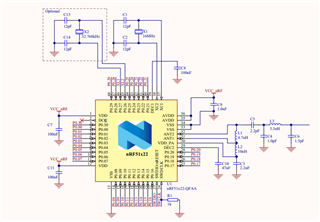Hi,
I have developed an application on an nrf51dk, with SDK12.3 (as it was the latest that I could make it work with). It is running fine on the DK, but when moving to the custom pcb i ran into a few problems, one of them being the ble_stack_init() doesn't return because it makes a call to sd_softdevice_enable(), which blocks.
While searching for solutions, I found many other people with similar problems, and this one was actually providing with a working configuration:
devzone.nordicsemi.com/.../ble-examples-halt-at-sd_softdevice_enable-on-the-custom-board
As per this post, I ended up using:
nrf_clock_lf_cfg_t clock_lf_cfg =
{
.source = 0, // => 0 (initial value=1)
.rc_ctiv = 16, // => 16 (initial value=0)
.rc_temp_ctiv = 2, // => 0 (initial value=0)
.xtal_accuracy = NRF_CLOCK_LF_XTAL_ACCURACY_500_PPM // => 7 (initial value=7)
};
This solution works.
Now the question is: what would be the best configuration for the crystal on our board (EPSON X1E0000210120 TSX-3225 16MHZ)?
Best regards,
Ricardo



